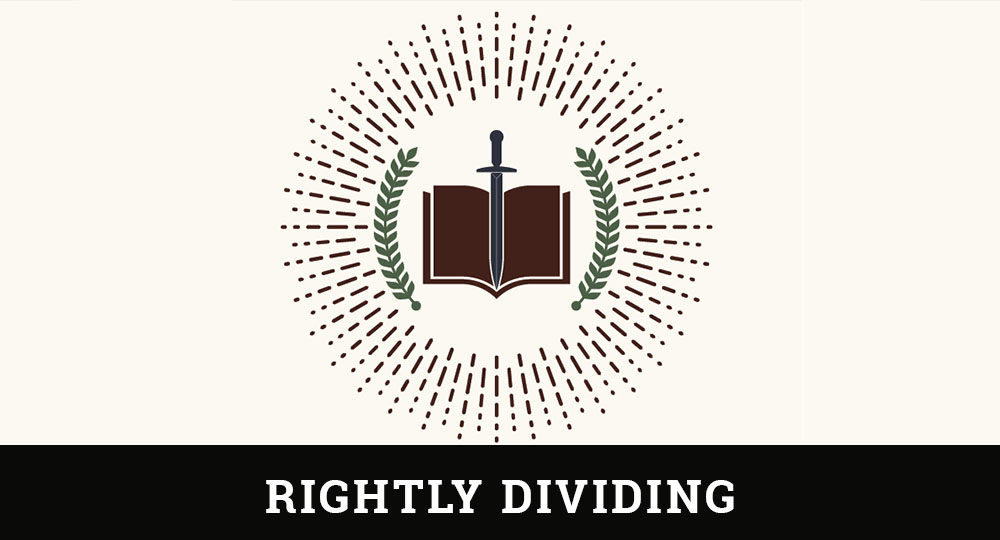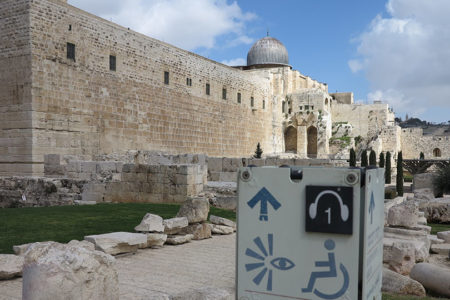Christ’s Incarnation
1 John 1:1–4
Before the apostle John wrote 1 John, he had already lived through the inception, expansion, and persecution of the first-century church and had dealt with many doctrinal errors. He was on the Jerusalem council that addressed issues unique to the early church on whether Gentiles could be saved if they did not follow the “custom of Moses” (circumcision, Acts 15:1). He also confronted some of the seven churches of Asia Minor that had allowed false teachers to gain a strong foothold within the church, calling on them to repent.
When John began this letter, he did not take time to write a formal salutation but launched immediately into a theological statement concerning the Incarnation of Jesus Christ. The Incarnation is the cornerstone of the Christian faith and the standard by which all doctrines concerning Christ must be judged. To deny Christ’s Incarnation exposes false teachers as unbelievers.
With this epistle, John again picked up his pen to address doctrinal error, this time within a new generation of Christians who were being inundated with false teachers. And he focused on Christ’s Incarnation.
John proved three truths about the incarnate Christ: (1) Christ is God, coequal with and of the same substance and essence as God the Father; (2) Christ possesses the attributes of omnipresence, omniscience, omnipotence, immutability, and eternality that belong only to God; and (3) Christ is the eternal Son of God who took on human flesh and now exists as the God-Man.
From its inception, the gospel message of mankind’s redemption and reconciliation to God began with the Incarnation of Jesus Christ. It is central to the faith, belief, and life of all true Christians.
In two short sentences (one long sentence in the Greek text), John explained Jesus is the incarnate Word of life. The first four verses reveal that (1) John personally experienced Christ in the flesh, (2) Jesus came from God the Father to declare eternal life, and (3) all Christians can have the same fellowship with Jesus that he and the other apostles possessed.
Christ’s Existence
The first verse contains four relative clauses relating to Jesus Christ that begin with the word which:
“That which was from the beginning, which we have heard, which we have seen with our eyes, which we have looked upon, and our hands have handled, concerning the Word of life.” The clauses do not refer to Christ personally but, rather, to things that are true about Him from the beginning. The word was is a verb of being, not of coming into existence; and it shows Jesus always existed—a claim for Christ’s eternality.
Commentators interpret the first clause, “that which was from the beginning,” to mean one of the following: the initial creation of all things (Gen. 1:1), Christ’s preexistence (Jn. 1:1), Christ’s Incarnation (v. 14), the beginning of Christ’s proclamation of the gospel, or the beginning of the apostles’ teaching about Christ’s ministry (words and works). The key is what the word from refers to.
It would seem, from the other three relative clauses, that the emphasis is not on tracing Christ back to His preexistence but, rather, looking from His Incarnation forward. That is, John was not proving Christ’s deity, as he did in his Gospel (Jn. 1:1); he was assuming Christ’s deity and proving the divine Christ is totally human. He wanted to refute the heresies of Docetism and Gnosticism (that Christ’s humanity was not real and that He was merely an emanation from God and only seemed human).
John and the other apostles were eyewitnesses to Christ’s humanity. They ministered with Him for more than three years and knew for certain He had come in the flesh (1 Jn. 4:2–3). They saw His suffering, death, and resurrection. Since John spoke of hearing, seeing, and touching the Lord, he likely was referring to the Incarnation as “the beginning.”
The second clause, “which we have heard,” indicates John and the apostles received a revelation from Christ that they understood in human terms. Their personal, intimate fellowship with Him produced an undeniable, unshakable assurance that He was the Messiah, the Son of God, who had come in the flesh.
The third clause, “which we have seen with our eyes,” indicates John and the others visually encountered the incarnate Christ and understood His significance. The words with our eyes reinforce the fact that Jesus was not a spiritual emanation from God, a phantom-like figure, or a vision; He was God in the flesh. The words have seen (Greek perfect tense) indicate what John saw of Christ during His earthly ministry was still visible in his mind’s eye.
The fourth clause, “which we have looked upon, and our hands have handled,” provides further evidence of the Incarnation. John and the apostles examined Christ so intently and completely they had no doubt about His literal, physical humanity. They did more than simply look at Him; they actually “handled” His body, which gave them conclusive evidence of His Incarnation.
John closed verse 1 with a summary: “concerning the Word of [the] life.” The Greek text has the definite article the before life. In other words, Jesus Christ is the “Word” (Greek, logos) of God (cf. Jn. 1:1), the One who sets forth the truth of and about God; and eternal life resides in Him. He is the source of life and the light of man’s salvation (cf. Jn. 1:4). Thus Christ is both the Preacher of God’s message and the Message of life (i.e., gospel) itself. Both reside in Him.
Christ Experienced
John often repeated himself to emphasize his point. In 1 John 1:2 he did so to further explain the concept of life in the phrase Word of life:
The life was manifested [made visible], and we have seen, and bear witness, and declare to you that eternal life which was with the Father [depicting a face-to-face relationship with, but distinct from, God the Father] and was manifested to us.
The life to which John bore witness was with God the Father in eternity but appeared in the physical person of Jesus Christ on Earth as a historical reality. John affirmed with apostolic authority that Jesus is “the life” (Jn. 14:6), or eternal life, who is coequal and coeternal with the Father. John said so with assurance because he had “seen,” “[borne] witness,” and “declare[d]” that Jesus is eternal and provides eternal life to all who believe.
Jesus displayed the life that was in Him: He raised people from the dead, giving physical life back to Jairus’s daughter (Mk. 5), the son of the widow of Nain (Lk. 7), and Lazarus (Jn. 11). He also promised to give eternal life to all who believed in Him (6:47; 17:2).
John’s personal experience with Jesus; his affirmation of who He is; and his authoritative, apostolic proclamation of the message provided to him by the risen Christ (Mt. 28:18–20) are proof enough that Jesus Christ is the God-Man. The use of we throughout these verses indicates all the apostles bore the same testimony and proclamation of Christ.
John repeated the words was manifested to us (1 Jn. 1:2) to emphasize and highlight Christ’s Incarnation, this time personalizing it by saying “to us.” The point is that John and the apostles had close, personal relationships with the incarnate Life in the person of Christ.
Christ Enjoyed
By restating the words seen and heard, John reminded his readers of his message and its purpose, while explaining the importance of Christ’s Incarnation for himself and all believers: “That which we have seen and heard we declare to you, that you also may have fellowship with us; and truly our fellowship is with the Father and with His Son Jesus Christ” (v. 3).
The phrase you also means believers who did not enjoy a personal relationship with Christ during His earthly life can still have spiritual fellowship with Him.
The word fellowship (Greek, koinonian) means “common” and denotes a sharing of an object or belief with another. Here it refers to sharing the faith in Christ proclaimed in John’s gospel message. John stressed that this bond of fellowship transcends the earthly and is “truly” with God the Father and Jesus Christ.
Rejecting John’s message and the fellowship indicates an insincere profession of faith. In reality, such people have no fellowship with God.
The definite article the before Father indicates both the Father and Son are equally God and are one in the Godhead. Here John explicitly declared the divine nature of the incarnate Christ. This teaching leaves no room for such heresies as Gnosticism or Docetism.
What an amazing, marvelous, and high privilege of fellowship God has granted all believers. To fellowship with the Godhead through Jesus Christ is unfathomable.
John closed this section by giving the reason for his letter: “And these things we write to you that your [our] joy may be full” (v. 4). The phrase these things we write emphasizes that John’s letter agrees with all the other apostles’ witnesses in that they were commissioned to define, describe, and defend the reality of Christ’s Incarnation.
Full joy within Christian fellowship is produced by a personal (intimate and intelligent) relationship with Jesus Christ in salvation, studying God’s Word, and yielding one’s life to the Holy Spirit’s ministry. Although we can experience overflowing joy in the Lord today, the joy we experience will never be full and complete until we get to heaven. Then we will see Christ face-to-face and experience a fullness of joy that will last for eternity.
Until that day, our faith does not focus on some abstract idea of Jesus but, rather, on the incarnate Christ, the God-Man, revealed in Scripture (Jn. 1:1–2, 4, 14). We live by faith, with hope and joy—a joy that is full of glory in Christ.







